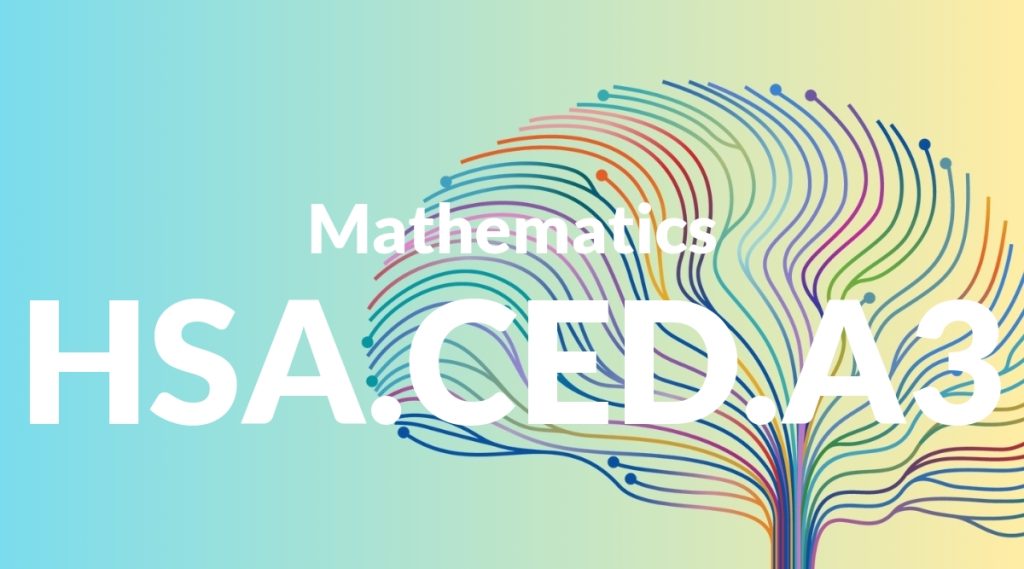Standard: HSA.CED.A3 – Represent constraints by equations or inequalities, and by systems of equations and/or inequalities, and interpret solutions as viable or nonviable options in a modeling context. For example, represent inequalities describing nutritional and cost constraints on combinations of different foods.
Grade level: High School: Algebra
Subject: Mathematics
Domain: Creating Equations
Teacher Overview
This standard focuses on helping students learn how to represent constraints using equations or inequalities and systems of equations or inequalities. Understanding this concept is crucial as it allows students to apply mathematical reasoning to real-world problems, making math more relevant and practical. Students should be comfortable with solving linear equations and inequalities, graphing them on the coordinate plane, and understanding systems of equations. This foundational knowledge is essential for accurately representing constraints in various contexts.
After mastering this standard, students will be able to handle more complex problems involving quadratic and exponential functions. They will also be better equipped to apply these skills in various fields such as engineering, economics, and data science.
Common Misconception 1
A common misconception is that all solutions to the equations or inequalities are viable in real-world contexts. This is incorrect because not all mathematically correct solutions make sense when applied to real-world scenarios. For example, a solution might suggest a negative quantity of a product, which is not feasible.
Intervention 1
To address this misconception, present students with real-world problems and ask them to interpret the solutions. Discuss why certain solutions are not viable and emphasize the importance of considering the context.
Common Misconception 2
Another misconception is confusing the solution sets of equations with those of inequalities. Equations have specific solutions, while inequalities have a range of solutions. This confusion can lead to incorrect interpretations of the problem.
Intervention 2
Use graphs to visually differentiate between the solution sets of equations and inequalities. Provide practice problems that require students to graph and interpret both types of solutions.
Prerequisite Knowledge
Students should have a solid understanding of basic algebraic concepts, including solving linear equations and inequalities, and graphing equations on a coordinate plane. Familiarity with systems of equations and inequalities is also important.
Subsequent Knowledge
After mastering this standard, students will be able to tackle more complex modeling problems involving quadratic and exponential functions. They will also be prepared to apply these skills in real-world contexts such as engineering, economics, and data science.
Instructional Activities
- Create a budget for a hypothetical school event considering various constraints.
- Plan a balanced diet using nutritional and cost constraints.
- Optimize resource allocation in a business scenario.
- Determine the best mix of investments for a given financial goal.
- Design a schedule that meets specific time constraints.




